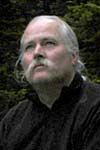Roslyn is a picturesque small town in the eastern foothills of the Cascades (nearest sizeable town is Ellensburg). Its history centers around the coal mines and multi-ethnic populations brought in to work them. But its moment of fame came when the television series Northern Exposure was filmed there. The series is considered important enough to have its own Wikipedia entry.
The series first aired in 1990 and continued for six seasons, a total of 110 episodes. The basic premise is that a small Alaskan town pays for a medical student's education, and in return he is obligated to practice there for several years once qualified. Doctor Joel Fleischmann arrives straight from New York City, feeling as much out of place as if he had landed on Mars.
Anyone who has seen Northern Exposure will remember the vivid characters in its large cast - Doctor Joel, Maggie, Maurice, Holling, Shelly, Marilyn, Ed, Ruth-Anne and Chris. The plots are quirky and interesting, many of them revolving around the cultural friction between Jewish New Yorker Joel and his new Alaskan community and environment. But there are also some intriguing takes on Alaska itself, with its long winter nights, spring thaw, Native Americans, bears and moose, isolation, and spirit of stubborn nonconformity.
Not everyone in Alaska appreciated the characterizations. There has of course been some speculation about which town in Alaska might have been the model for Cicely, with Nenana, Talkeetna, Hope, and Homer all being suggested. And of course Washington is not a fully convincing stand-in for Alaska. For one thing the trees are wrong, also it isn't dark nearly enough in the winter episodes, nor frozen enough. But those are quibbles - the opening credits, with a young moose wandering through the town, now epitomize Alaska to many who have never been there.
Most of the episodes begin with the "Chris in the Morning" radio show on station KBHR (kay-bear, get it?), the most local station imaginable, serving just Cicely. The DJ is Chris Stevens (played by John Corbett, also charming in My Big Fat Greek Wedding
The "Oasis" Roslyn Cafe (standard size or fullscreen), and other series venues, including Dr Joel's office and The Brick pub, can be seen along the main street, Penn Avenue (standard size or fullscreen), but others existed only as sets. There have been a few changes in the town since 1990, but all in all it remains a gem of a northwest frontier town, with the bonus of reminding us of Northern Exposure.
Northern Exposure - The Complete Series
Northern Exposure - The Complete First and Second Seasons
Northern Exposure - The Complete Third Season
Northern Exposure - The Complete Fourth Season
Northern Exposure - The Complete Fifth Season
Northern Exposure - The Complete Sixth Season
The music in the broadcast version of Northern Exposure was exceptional, starting with the opening credits. Some DVD versions seem to have altered the sound track, but the Complete Series edition promises most of the original music. The music is also available on CD.
Northern Exposure: Music From The Television Series (1990-95 Television Series)
More Music From Northern Exposure (1990-95 Television Series)
